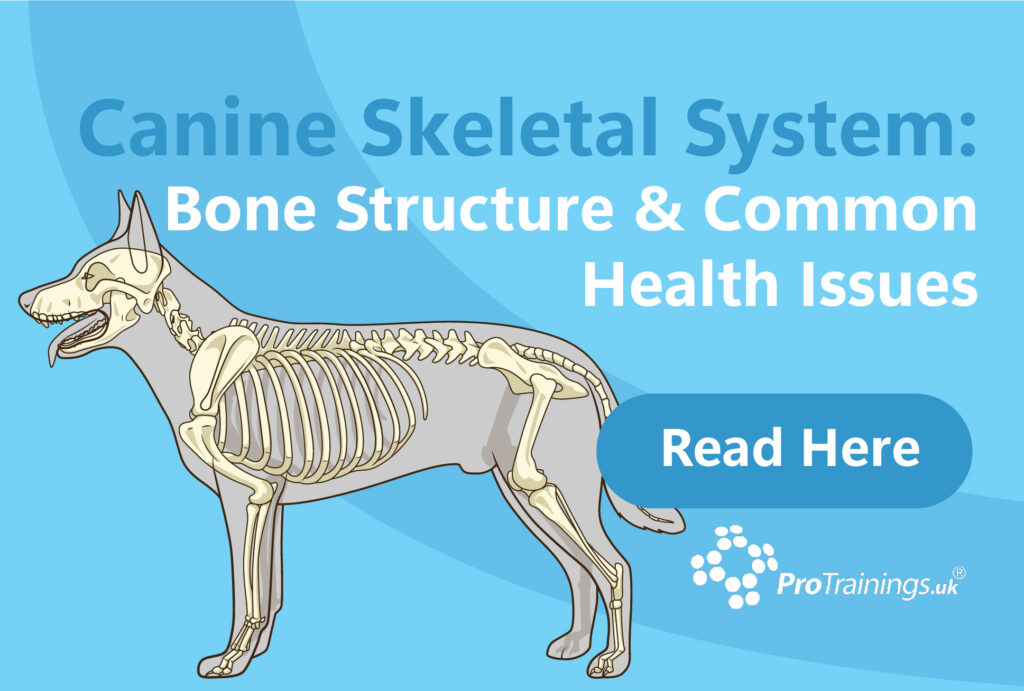A dog’s skeleton is much more than a framework that supports its body. It is a complex, interconnected structure designed to enable movement, protect vital organs, and offer a storage system for essential minerals. Comprising over 300 bones in most breeds, the canine skeleton is a marvel of evolution, carefully adapted for running, jumping, digging, and even the decisive chewing actions for which dogs are so well known.
In addition to its structural roles, the skeletal system also acts as a reservoir for calcium and phosphorus, minerals critical for numerous metabolic processes. Furthermore, bones house bone marrow, the soft tissue responsible for producing the blood cells that carry oxygen, fight infection and support the dog’s overall health. Understanding the different components of this system can help pet owners appreciate how a dog’s body functions and what it needs to stay healthy.
Key Bones: Skull, Spine, Ribs, Limbs
The skull is the protective casing for the brain and the foundation for the jaw muscles, teeth, and sensory organs. Canine skull shapes can vary significantly depending on the breed, some dogs, like Greyhounds, have long, narrow skulls (dolichocephalic), while others, like Bulldogs, have short, broad skulls (brachycephalic). The shape of the skull can influence not only the dog’s appearance but also its breathing, chewing efficiency, and susceptibility to certain health issues.
The spine is made up of several distinct regions: the cervical (neck), thoracic (upper back), lumbar (lower back), sacral (pelvic), and caudal (tail) vertebrae. Together, these vertebrae form a flexible column that supports the body’s weight, protects the spinal cord, and allows for a wide range of movement. The thoracic vertebrae anchor the ribs, forming a sturdy cage that shields the heart and lungs. The lumbar vertebrae provide the flexibility and strength needed for activities like jumping. In contrast, the sacral vertebrae are fused to the pelvis, aiding in force transmission from the hindlimbs.
The ribcage consists of a series of ribs attached to the thoracic vertebrae and connected to the sternum (breastbone). This bony cage not only protects the vital organs of the chest but also plays a role in the breathing process. The flexibility of the ribcage allows the chest to expand and contract with each breath, ensuring a steady supply of oxygen to the body.
The limbs, forelegs and hindlegs, are built for strength and agility. The forelegs are attached to the body by the shoulder girdle, which includes the scapula (shoulder blade) and the clavicle (collarbone). Conversely, the hindlegs are anchored by the pelvis, which connects to the femur (thighbone). In both the front and back limbs, long bones like the humerus, radius, ulna (forelegs), and tibia, fibula (hindlegs) work in conjunction with shorter bones and joints to produce a wide range of movements. The feet, comprised of metacarpals, metatarsals, and phalanges, provide balance, grip, and shock absorption during activity.
Common Bone-Related Issues in Dogs
While a dog’s skeletal system is incredibly resilient, it’s not immune to injury or disease. Some of the most common bone-related issues include:
- Fractures:
Fractures can occur from trauma, such as falls, car accidents, or rough play. Depending on the severity and location, fractures may require splinting, surgery, or simply time and rest. Early recognition and treatment are crucial to ensure proper healing and prevent long-term complications. - Joint Problems:
Many skeletal issues arise in the joints, where bones meet and movement occurs. Hip dysplasia is a common condition in which the hip joint doesn’t fit properly, leading to wear, pain, and arthritis over time. Similarly, elbow dysplasia affects the elbow joint, causing discomfort and mobility issues. Osteoarthritis and degenerative joint disease can develop as dogs age, resulting in stiffness and reduced range of motion. - Bone Diseases:
Certain breeds are prone to genetic bone disorders. For example, osteochondritis dissecans (OCD) occurs when cartilage in a joint doesn’t develop properly, leading to pain and potential joint damage. Panosteitis, often called “growing pains,” is a condition seen in young, large-breed dogs where inflammation in the long bones causes lameness that typically resolves as the dog matures. - Nutritional and Metabolic Bone Issues:
A lack of essential minerals like calcium or an imbalance in nutrition can weaken bones, making them more susceptible to fractures or deformities. Puppies fed inappropriate diets or adult dogs with underlying health conditions affecting calcium metabolism may develop soft or brittle bones, such as rickets or osteomalacia.
By understanding the anatomy of your dog’s skeleton, you can better recognise early signs of these issues and seek veterinary care promptly. Additionally, maintaining a healthy weight, providing appropriate exercise, and ensuring a balanced diet can all help support strong, healthy bones throughout your dog’s life.
